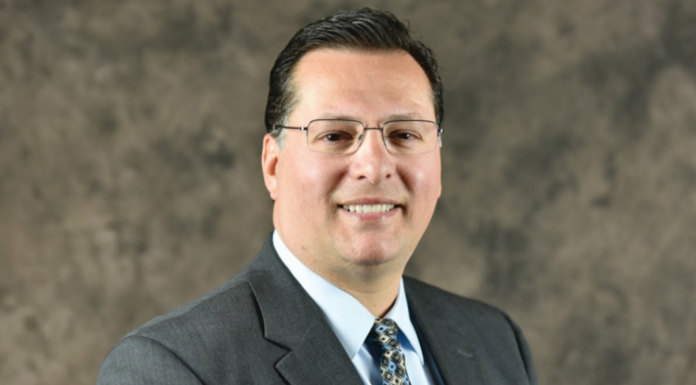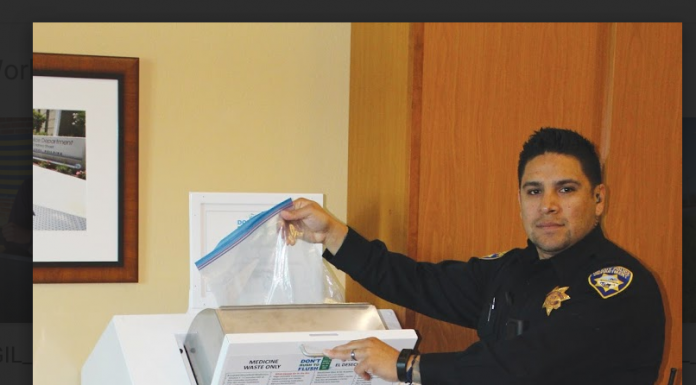Guest Column: November’s Election
This November’s election will be hugely important for Gilroy and for the nation as a whole. Not only will it be a test of our presidential election system, but it will be an opportunity for Gilroy residents to vote for a mayor and three council members of their choice. Mayor Woodward, Cat Tucker, Teri Aulman and Daniel Harney all finish their terms at that time. This is an exciting moment in the history of our democracy. I hope that Gilroy residents will register to vote if they haven’t already, and that all registered voters express their wishes at the polls.
Mayor’s Race Heats Up
The Gilroy mayoral race is starting to heat up as Terry Feinberg has announced he is resigning his post as chairman of the board of the Gilroy Chamber of Commerce in order to support Councilmember Roland Velasco in his bid to become Gilroy’s next mayor.
Interview: Councilman Peter Leroe-Muñoz
He came to Gilroy as deputy district attorney prosecuting drug dealers and bad financial actors. Mayor Pro Tempore Peter Leroe-Muñoz is a Harvard Law School alum with a first-hand understanding of public safety issues affecting the region. No longer in the running for state Assembly, having dropped out of the race in January, Leroe-Muñoz has two more years left in his term on the City Council. In this Q&A he addresses a major project’s effect on the communications capabilities of law enforcement and emergency responders across the region, as well as a rumour about his residency.
Gilroy Goes for Green Energy
The Gilroy City Council on Monday voted to join a new county energy agency that plans to cut greenhouse gas emissions by getting power from renewable sources.
Photo of the Day: Uvas Reservoir Crests for the First Time in Years
Uvas Reservoir, which had dwindled during the drought, reached an inch from its top Tuesday, before officials began letting water down the spillway. It doesn't mean the end of the drought, water officials say, but it's a big step toward helping recharging the underground aquifer that brings Gilroy much of its water.
Gilroy Really Needs an Arts Center
Last year, 6,000 people attended events at the Gilroy Center for the Arts, in increments of 49—but frustrated members of the arts community say they could have handled many, many more if they had the space.
Don’t Flush: Put Drugs Here
Gilroy Police officer Bobby Zuniga demonstrates the new “Don’t Rush to Flush” bin at the Gilroy Police Department (7301 Hanna St.). The bin was established as part of a $276,000 dollar grant funded project to place and promote 50 bins around the county to ensure that prescription drugs don't get into the water supply.
Council mulling energy co-op
After kicking the can at its Feb. 22 meeting, the Gilroy City Council will again deliberate at its March 7 meeting whether to join Silicon Valley Community Choice Energy (CCE), a new multi-agency initiative that aims to cut the region’s greenhouse gas emissions by procuring cleaner forms of energy on behalf of its electricity customers.Led by the city of Sunnyvale, whose mayor, Glenn Hendricks, called the CCE one of the single most impactful strategies in that city’s action plan to meet targets for greenhouse gas reductions. The Silicon Valley CCE would purchase electricity on the open market for its customers, similar to a co-operative, instead of from PG&E.A recently released technical study of the CCE looked at three different program scenarios, two of which would lead to rate savings of 1 percent to 5 percent over time, while the third, which resulted in the greatest reductions in greenhouse gas emissions, would keep electricity rates at parity with PG&E.The investor-owned PG&E would continue to deliver the electricity and provide customer services. Energy bills would look similar, except for a notation showing electricity generated by Silicon Valley Community Choice Energy.The city of Sunnyvale, which serves as the project lead and fiscal agent, was joined by the cities of Cupertino, Mountain View and the county of Santa Clara in determining the feasibility of the project and facilitating the technical study, which also looked at other successful programs in the state.In addition to the four sponsoring agencies, Gilroy, Campbell, Los Altos, Los Altos Hills, Los Gatos, Monte Sereno, Morgan Hill and Saratoga all voiced interest in the CCE and together, the 12 jurisdictions would make up the service area.The technical study found that PG&E provides electricity to approximately 240,000 customers in the targeted region—90 percent residential, 10 percent commercial—consuming about 4 billion kilowatt hours of electricity annually.Although residential ratepayers make up the bulk of customer accounts, they only consume 34 percent of the region’s electricity. Sixty-five percent is designated as either commercial or industrial. The remaining one percent goes toward street lighting.The CCE would pool the electricity demand of the region’s 240,000 customers and procure a greater amount of energy from renewable sources than is currently offered by PG&E. The CCE also aims to provide competitive, potentially lower electricity rates for all customers while supporting new clean energy projects in the region.Customers would be automatically enrolled in the CCE program, although customers can choose to opt-out and stay with PG&E for bundled service.Other successful models the technical study looked at were programs in Marin and Sonoma counties and the city of Lancaster.The city of Gilroy is the last prospective member of the CCE to decide whether or not to join.A series of community meetings held last October in five of the jurisdictions, including Gilroy, showed 96 percent of attendees thought it was a good idea to create a locally controlled nonprofit to provide cleaner, greener electricity at competitive prices.Seventy-seven percent of attendees said their interest in the CCE was due to their desire to reduce their carbon footprint, while 88 percent said they were willing to pay a premium to have all of their electricity generated by renewable sources.At the Feb. 22 City Council meeting, councilmembers Cat Tucker, Dion Bracco, Terri Aulman joined Mayor Perry Woodward in voicing skepticism over the CCE, with Woodward saying it sounded almost “too good to be true.”Tucker worried about potential rate increases to Gilroy electricity customers, even though the technical study found no significant rate increases but rather potential savings of up to 5 percent over the course of the 10-year period.“Honestly, you don’t understand how much low-income families live in Gilroy. Our demographics are worse in all the county, even a $10, $5, $3 extra to PG&E could make a difference as to whether our soup kitchens have more people there in the week,” said Tucker during discussions.She also worried that the $150,000 Gilroy would have to approve to help cover startup costs, would prove unpalatable to an electorate clamoring for street improvements.Tucker said she was also wary of joining another regional body, fearing Gilroy would get short shrift in any decisionmaking.If Gilroy joined the CCE, the city would occupy a seat on the agency’s governing board and contribute to decisions on electricity rates and energy procurement.Waiting a year to join would jeopardize the city’s ability to contribute to these key decisions, argued Councilmember Peter Leroe-Muñoz.“Self-exclusion, taking ourselves out of the debate” would exacerbate any north-south divide, he said.Addressing concerns over potential rate increases, Leroe-Muñoz said he believed the plan, which he said really does aim to get lower rates for customers, actually works to alleviate a lot of those price pressures.“While there is no guarantee,” he told the council. “I like my chances a little bit better when I have a say in what those rates might be instead of leaving it up to someone else.”The council’s discussion of CCE continues on March 7.
Riding Round in Circles
Although some people find them confusing and intimidating, Gilroy is planning to add 13 more roundabouts in the next two years to the two it already has.
Gilroy Gets New City Administrator
The Gilroy City Council will vote on hiring Gabriel Gonzalez as the new city administrator on Monday, giving him a salary of $210,000 a year and a car allowance of $4,200 a year.Gonzalez, 46, a CSU-Fresno graduate and Santa Cruz native, has had five jobs in the past six years. He was the city manager of Rohnert Park from 2010-2013, then moved to Kansas to be near his daughter and worked as city manager for the town of Augusta for five months. Back in California, he was the interim finance director for the city of El Monte for five months before moving up to assistant city manager there, where he remained for a year.Since July he’s been a management consultant for Management Partners, a national consulting firm.Earlier in his career he worked for six years as the city manager of Mendota and for three years as a manager of the Clinica Sierra Vista, a Central Valley healthcare provider for low-income and rural workers. He was finance director for the city of Arvin for six years, starting in 1995, according to his LinkedIn profile.Gonzalez was acclaimed for his work in Rohnert Park, reducing the city’s debt from $9 million to $2.2 million, according to a report in the Community Voice newspaper. He was said to have cut costs and created a 10-year plan to manage the budget.“One of his favorite mottos is ‘if the money’s not in our bank, we don’t spend it.’” the paper reported him saying.Rohnert Park City Councilman Jake Mackenzie lauded Gonzalez for helping turn the city around when it was on the verge of bankruptcy. "He has done yeoman's work; he has guided us through some very real fiscal crises and set us on a good direction for the future," Mackenzie told the Santa Rosa Press Democrat on the manager’s departure in 2013.The city’s then mayor Pam Stafford also praised him in that newspaper. “He came in at a time when we knew that what we needed to do is get financial stability, and we're well on our way to that,” she said. “He did a great job.”Former Morgan Hill city manager Ed Tewes, has served Gilroy on an interim basis since September 2015. The city manager before that, Tom Haglund, left after seven years totake a job as general manager of the Tuolumne Utilities District in Sonora, where he has a second home.Gonzalez was picked by a council subcommittee that included Mayor Perry Woodward and councilmembers Terri Aulman and Daniel Harney. The city had been looking since September and pared 29 applicants down to six, who participated in extensive interviews.Gonzalez has a Bachelor of Science degree in Business Administration from National University and a Masters of Public Administration from CSU-Fresno.






















